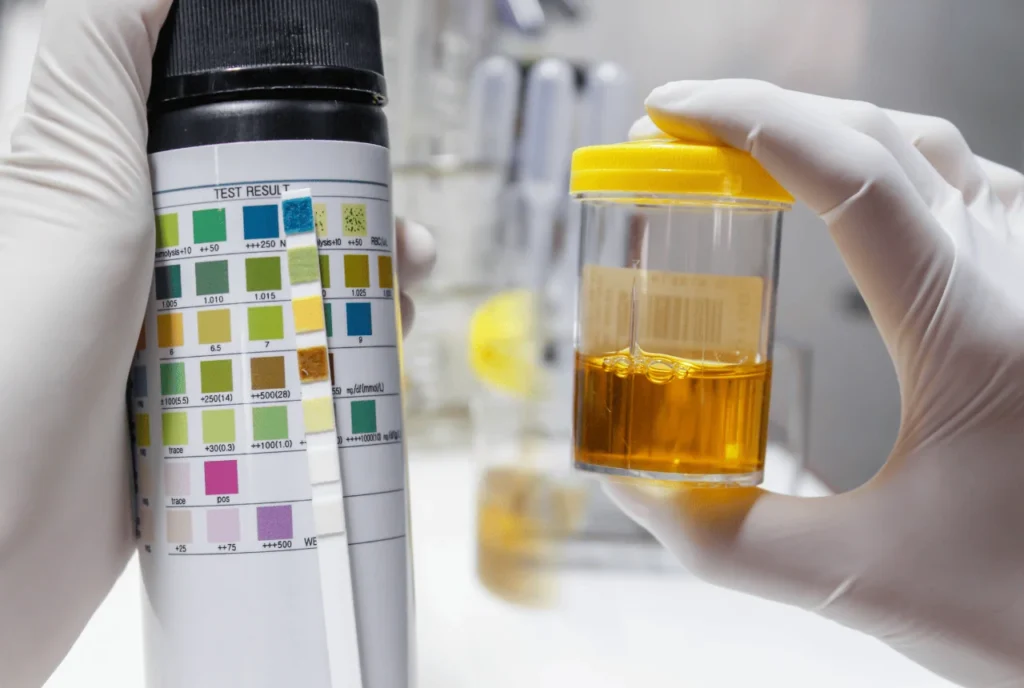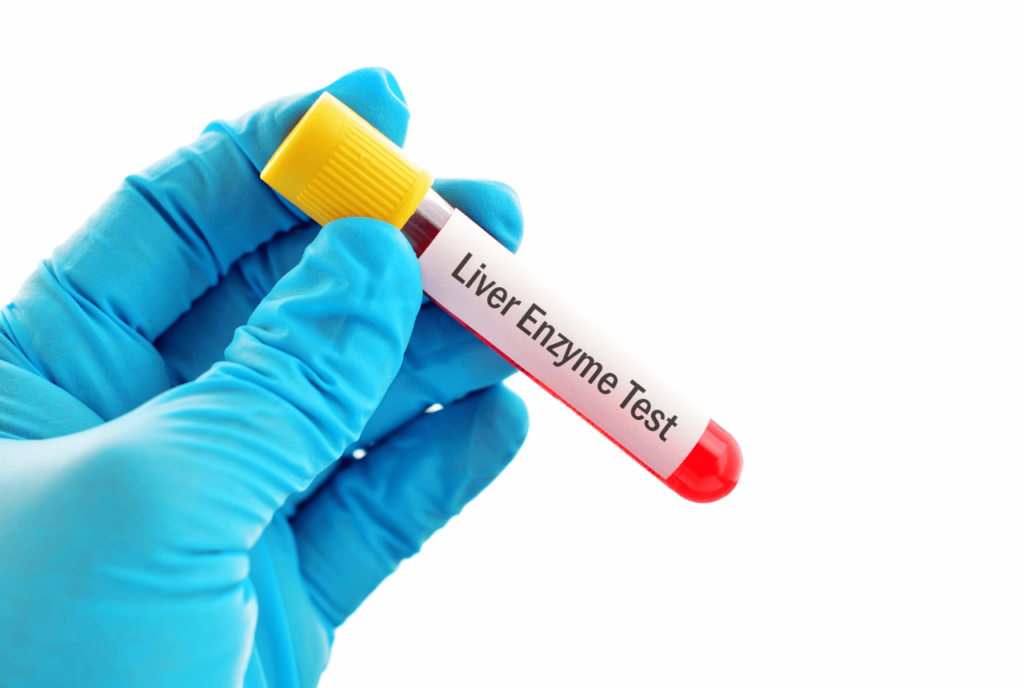
-
 Posted By Dr. Amritangsu Borkakoty
Posted By Dr. Amritangsu Borkakoty -
-
Comments 0
Does Obesity Cause Fatty Liver? In recent years, fatty liver disease, especially non-alcoholic fatty liver disease (NAFLD), has become a growing health concern across the globe. While many associate liver issues with excessive alcohol consumption, NAFLD is different — it’s linked to lifestyle factors, primarily obesity. This condition occurs when excess fat builds up in the liver cells without alcohol being a factor.
If left unaddressed, it can lead to serious complications like cirrhosis or even liver cancer. The good news is that recognizing the symptoms early can significantly reduce the risks and help manage the condition effectively. In this article, we will take a closer look at how obesity contributes to fatty liver disease and why understanding its symptoms is essential for preventing long-term health problems.
Does Obesity Cause Fatty Liver? Exploring the Connection

Definition of Fatty Liver Disease
Fatty liver disease occurs when there is excessive fat stored in liver cells. It is primarily divided into two types:
- Non-Alcoholic Fatty Liver Disease (NAFLD): This form of fatty liver disease occurs when fat builds up in the liver without being linked to alcohol consumption. It is commonly associated with obesity, diabetes, and metabolic syndrome.
- Non-Alcoholic Steatohepatitis (NASH): A more severe form of NAFLD, NASH involves not just fat accumulation but also inflammation of the liver. Over time, this inflammation can lead to scarring (fibrosis) and potentially progress to cirrhosis or liver failure.
Obesity is a significant risk factor for both NAFLD and NASH, as excess body fat, particularly abdominal fat, can cause the liver to accumulate more fat, leading to inflammation and other complications. Understanding this connection is crucial in preventing and managing fatty liver disease.
How Obesity Contributes to Fatty Liver
Obesity significantly contributes to the development of fatty liver disease through several mechanisms:
- Excess Fat in Liver Cells: Increased body fat leads to higher levels of free fatty acids in the bloodstream, which are taken up by liver cells, causing hepatic steatosis.
- Metabolic Syndrome: Obesity is often associated with metabolic syndrome, characterized by insulin resistance, high triglycerides, and hypertension, all of which exacerbate liver fat accumulation.
- Insulin Resistance: This condition promotes increased lipogenesis (fat creation) in the liver while decreasing fat oxidation, leading to further fat buildup.
Several risk factors are linked to obesity and the development of fatty liver disease:
- Diet: High-fat diets contribute to increased liver fat.
- Diabetes: Individuals with Type 2 diabetes have a higher risk of developing NAFLD.
- Sedentary Lifestyle: Lack of physical activity is a significant contributor to both obesity and fatty liver disease
9 Essential Symptoms You Must Spot
1. Chronic Fatigue

Chronic fatigue is a common symptom of liver dysfunction, often resulting from the liver’s inability to effectively process toxins and produce energy-boosting proteins. When the liver is compromised, it can lead to a buildup of harmful substances in the bloodstream, which contributes to persistent tiredness and a general feeling of malaise. This fatigue can be debilitating, affecting daily activities and overall quality of life
2. Abdominal Pain

Pain in the upper right abdomen is frequently associated with liver inflammation or enlargement. This discomfort may manifest as a dull ache or sharp pain, often exacerbated after eating fatty foods. Such abdominal pain can indicate underlying liver issues, including fatty liver disease or hepatitis, prompting the need for medical evaluation.
3. Unintentional Weight Gain

Unexplained weight gain can be linked to fat accumulation in the liver, particularly in cases of nonalcoholic fatty liver disease (NAFLD). As fat builds up, it can disrupt metabolic processes and contribute to insulin resistance, leading to weight gain despite no changes in diet or activity levels. This symptom is often a red flag for metabolic syndrome and should be addressed promptly.
4. Dark Urine

Impaired liver function can lead to dark urine due to elevated bilirubin levels in the bloodstream. When the liver struggles to process bilirubin effectively, it spills over into the urine, causing it to appear amber or brown. This change in urine color is a significant indicator of potential liver distress and warrants further investigation.
5. Jaundice

Jaundice is characterized by yellowing of the skin and eyes, indicating advanced liver dysfunction. This occurs when the liver fails to adequately process bilirubin, resulting in its accumulation in the body. Jaundice is often a sign of severe fatty liver disease or other serious liver conditions and requires immediate medical attention.
6. Swelling in the Belly or Legs

Fluid retention, known as ascites when it occurs in the abdomen, is common among individuals with fatty liver disease. This swelling can also extend to the legs and ankles due to compromised liver function affecting fluid balance in the body. Patients may notice an increase in abdominal girth or discomfort due to this fluid buildup.
7. Elevated Liver Enzymes

Regular monitoring of liver function tests is crucial for detecting fatty liver disease. Elevated levels of liver enzymes such as ALT and AST can indicate inflammation or damage to liver cells. These tests are essential for assessing overall liver health and guiding further diagnostic procedures.
8. Lack of Appetite or Nausea

Liver impairment can lead to digestive disturbances manifesting as a lack of appetite or persistent nausea. When the liver struggles with its functions, it affects nutrient processing and digestion, resulting in feelings of fullness after small meals or ongoing discomfort after eating.
9. Mental Confusion

Severe liver damage may lead to hepatic encephalopathy, characterized by cognitive impairments such as confusion or altered mental status. This condition arises when toxins build up in the bloodstream due to inadequate liver function, affecting brain activity and leading to significant neurological symptoms.
Diagnosing Fatty Liver Disease
Medical Tests and Procedure
Diagnosis of fatty liver disease typically involves a combination of blood tests that assess liver enzyme levels, imaging studies like ultrasound or MRI, and sometimes a biopsy to evaluate liver tissue directly. These tests help determine the extent of liver damage and guide treatment options.
When to Seek Medical Advice
Early detection is vital for managing fatty liver disease effectively. Individuals with risk factors such as obesity should undergo routine check-ups to identify any symptoms early on. Persistent symptoms like fatigue, jaundice, or abdominal pain should prompt immediate medical consultation.
Treatment and Lifestyle Changes for a Healthier Liver
Weight Loss Strategies
Losing 7-10% of body weight can significantly improve liver health and potentially reverse fatty liver disease. Weight loss reduces fat accumulation in the liver and improves metabolic function.
Dietary Modifications
Adopting a high-fat, low-sugar diet can help reduce excess fat stored in the liver. Incorporating whole foods while minimizing processed sugars supports overall liver health and aids in fat reduction.
Physical Activity
Regular exercise is recommended for improving liver health by enhancing metabolism and aiding weight loss efforts. Engaging in at least 150 minutes of moderate-intensity aerobic activity weekly is beneficial for those with fatty liver disease.
Medical Interventions
In severe cases of fatty liver disease, medical interventions may include medications aimed at reducing inflammation or bariatric surgery for significant weight loss. These options should be discussed with healthcare providers based on individual health assessments.
Expert Insights: Dr. Amritangsu Borkakoty’s Recommendations
Dr. Amritangsu Borkakoty is recognized as one of the leading liver specialists in Guwahati and Assam. He emphasizes the importance of early detection through regular check-ups and advocates for lifestyle changes as pivotal steps in managing fatty liver disease effectively. His patients have reported successful outcomes through tailored treatment plans that address both medical needs and lifestyle modifications.
In conclusion, there is a strong link between obesity and fatty liver disease; recognizing symptoms early can significantly impact treatment outcomes. It is crucial for individuals experiencing any concerning signs to seek medical advice promptly.
Recent Posts
- Common Causes of Stomach Ulcers and Effective Treatment Options
- Early Symptoms of Liver Damage: How to Spot the First Warning Signs Before It’s Too Late
- Best Treatment for Hepatitis B and C: Your Complete Guide to Symptoms, Care, and Prevention
- How to Reduce Liver Inflammation Fast: 5 Proven Tips for Rapid Liver Recovery
- Why You Shouldn’t Ignore NAFLD: 5 Shocking Health Risks You Need to Know


